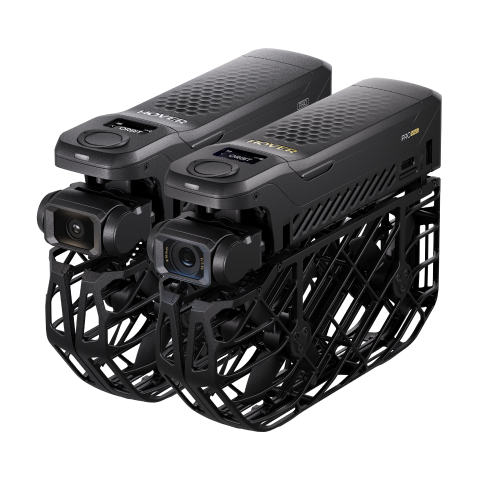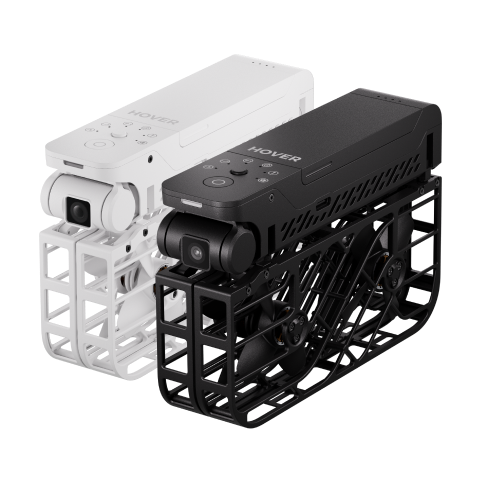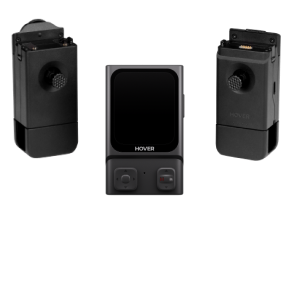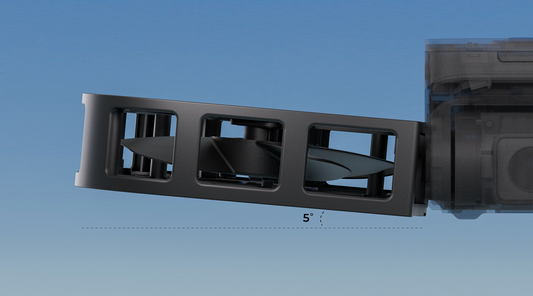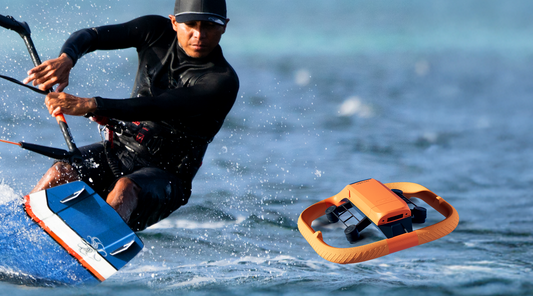Table of content
HOVERAir X1 products use a combination of mechanical and electronic image stabilization technologies to achieve rock steady videos even in windy or high speed environments. Let’s find out how!
What is a Gimbal?
In aerial photography and drone technology, the gimbal is a crucial component. It is a highly intelligent stabilization system that maintains camera stability during flight. With the help of a gimbal, users can capture smooth, stable footage even in high-speed flights or complex environments, producing film-like results.
How Does a Gimbal Work?
To better understand how a gimbal works, we can compare it to an "intelligent hand" that constantly fine-tunes the camera's angle. When a drone is flying, it is subject to various forces, such as wind, movement, and even pilot control, causing the aircraft to wobble in different directions. Without a stabilization system, the camera would be directly affected by these movements, resulting in blurry footage. However, the gimbal, equipped with precision motors and sensor systems, can detect these movements in real time and quickly make adjustments to keep the camera level and stable.
Stabilization can be utilized on three different axes: pitch, roll, and yaw.
- Pitch Axis: Controls the camera's tilt up and down. When the drone accelerates or decelerates, this axis's movement is most noticeable. The gimbal's motor precisely adjusts the camera's angle along this axis, ensuring it remains pointed at the target.
- Yaw Axis: Controls the camera's left and right rotation. When the drone turns or changes direction, the gimbal's motor on this axis fine-tunes the camera to prevent sudden jerks in the footage.
- Roll Axis: Controls the camera's tilt from side to side. When the drone flies in windy conditions or over uneven terrain, the roll axis adjusts to maintain a level horizon in the footage.
Mechanical stabilization provides maximum anti-shake effects without cropping the image by responding near-instantaneously to sudden movements or shakes. Three-axis gimbals may be used in professional applications such as larger drones or professional camera equipment, where performance concerns outweigh weight or size considerations.
What is Electronic Image Stabilization?
In situations where a mechanical gimbal may not be practical, EIS applies image processing algorithms to crop and rotate to remove jerks and wobbles.
EIS technology functions by detecting the camera's motion trajectory and automatically cropping the edges of the footage and processing the remaining portion (for example rotating) to make the final video appear more stable and smooth.
For small devices that require lightweight designs, such as smartphones or action cameras, EIS offers a stabilization solution without the need for additional hardware. However, since EIS typically involves cropping the image, it will sacrifice some of the image resolution. This is why you may notice when switching from “Photo” to “Video” on your phone, the image will crop in.
Comparison of videos without EIS electronic image stabilization and with electronic image stabilization applied.
Video before EIS adjustment
Video after EIS adjustment
EIS and Gimbal Technology in Application
The right combination of electronic and mechanical stabilization will depend balancing considerations like stabilization performance, weight, and space.
HOVERAir X1: Single-Axis Gimbal + Three-Axis Electronic Image Stabilization (EIS)
On the HOVERAir X1, size and portability are paramount for this pocket-sized flying camera. Here, we utilize a single-axis gimbal to control the pitch. This ensures that the camera remains stable during drone acceleration or deceleration. It can also be used to center the user in the frame when the device is at different heights. Most notably, during Bird’s Eye mode, the gimbal rotates to a -90 degree angle, facing the ground. Combined with a wide FOV lens and state-of-the-art EIS and horizon leveling, the HOVERAir X1 is able to output stable footage even in level 4 winds.
HOVERAir X1 PRO and PROMAX: Two-Axis Gimbal + Three-Axis Electronic Image Stabilization (EIS)
The two-axis gimbal primarily provides mechanical stabilization compensation in the roll and pitch directions to accommodate the significant maneuverability of the aircraft in these axes. In comparison to the HOVERAir X1, this system better compensates for multi-directional movements during flight, particularly improving stability in horizontal motions. Furthermore, with the introduction of the dual-axis mechanical gimbal in the HoverAir X1 PRO & PROMAX, the cropping ratio is significantly reduced, maximizing the preservation of the original image quality.
The HOVERAir X1 PRO and PROMAX support follow speeds up to 42km/h (26mph), the device experiences larger angle changes in roll and pitch, which can affect the stability of the captured footage. Therefore, we utilize a dual-axis gimbal is to ensure smooth and stable imaging and supplement with EIS.
In terms of electronic stabilization, the HOVERAir X1 PRO & PROMAX continue to use three-axis EIS, but with significantly enhanced performance. This is achieved through more powerful image signal processors (ISP) and graphics processing units (GPU), allowing for higher resolution and frame rate footage. Specifically, these models support up to 4K 60fps, 120fps, and 8K 30fps electronic stabilization, ensuring smooth and stable video even at high resolutions.
Unique Motion Control System
Beyond stabilization, the HOVERAir series introduces a unique motion control system that ensures stability and smoothness not only in the pitch, yaw, and roll rotational axes but also in the XYZ spatial positioning and velocity dimensions during camera movements.
In practical application, this motion control system ensures smooth transitions in complex motion trajectory filming with HOVERAir products. For instance, when performing a quick side flight combined with an ascent, the HOVERAir's motion control system precisely adjusts flight speed and position changes, preventing jerks or unnatural transitions in the footage caused by sudden changes in speed or direction.
By integrating this motion control system, the HOVERAir series further enhances stability and image quality, delivering unparalleled smoothness and stability in both steady flight conditions and complex dynamic shooting scenarios.
Conclusion
In conclusion, the HOVERAir X1 series combines mechanical stabilization, electronic image stabilization, and a motion control system to create a lightweight, efficient stabilization system. This system not only effectively counters multi-dimensional shakes during flight but also delivers smooth, stable footage at high resolutions.
The HOVERAir X1 series' stabilization technology make it fitting in many scenarios, whether for everyday family recording or professional aerial photography. For those seeking the ultimate image quality and smooth video experience, the HOVERAir X1 PRO & PROMAX offer higher performance and flexibility, particularly suitable for dynamic shooting scenarios such as sports events and outdoor adventures.
